We are huge fans of the lean startup movement. We champion it religiously to all our clients because it helps them iteratively build a product using the build-measure-learn philosophy. But lately there’s been a lot of confusion surrounding the concept of an MVP from many founders.
Minimum Viable Product (MVP) is one of the core philosophies of the Lean movement.
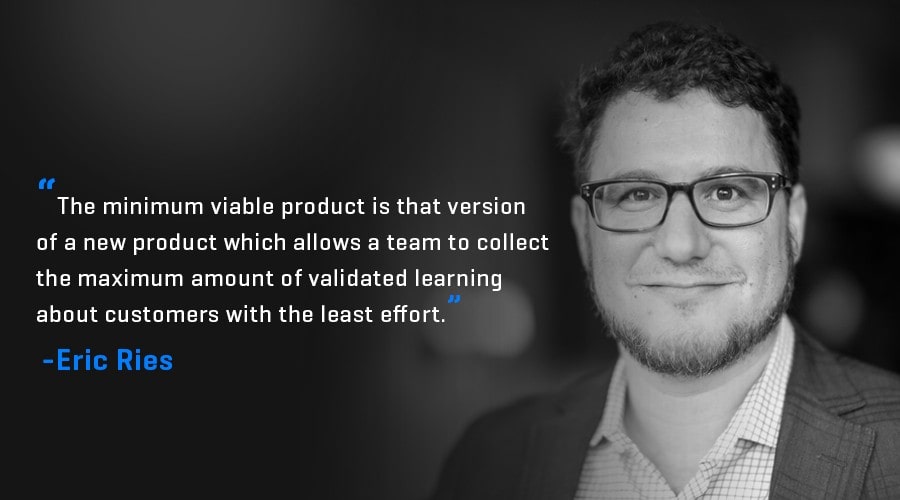
The purpose of the MVP is to be customer-driven instead of being product-driven. It starts with the focus on learning from customers to validate the business hypothesis. By putting the customers first and figuring out what customers want or don’t want, you can validate your business ideas.
The main objective of the MVP is validated through learning about the business value. Thus, it is an experimental business process rather than just a minimal product development process.
An MVP acts as a reality check for founders so they do not end up wasting tons of time and money only to build something no one needs or will pay for.
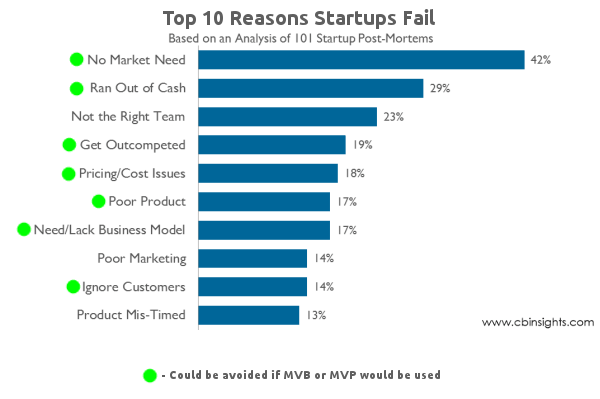
Very common MVP traps we see founders fall for
Many founders come to us with product ideas and business goals they want developed. But whenever we ask them deeper questions about customer problems, needs, and user research backing their assumptions (so that we can design the right product and target the right needs). Guess what?
They can’t answer or haven’t done any customer/market research to validate their ideas. We strongly believe that any spec document or feature list should not exist if you haven’t validated it through user interviews or talking with potential customers.
This lack of validation leads to the most common MVP trap founders fall for — “building stuff.” New founders think that building something fast and iterating quickly will help them get somewhere. They develop prototypes that are half-baked and poorly thought through. They become criminally lazy and don’t even think about customers’ needs and values.
Over pursuing your MVP this way can be the fastest way for your company to “go broke saving money”.
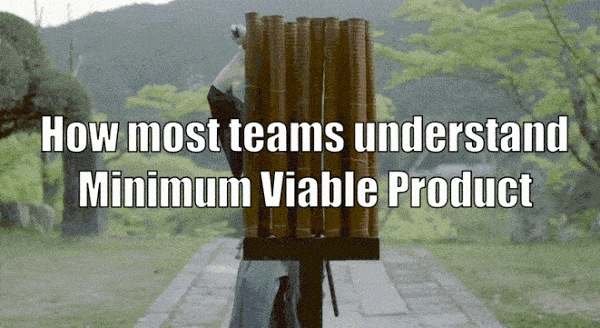
MVPs have “get rich quick” elements that cloud people’s judgement
Like many popular movements, Lean methodology has become a movement that people follow blindly without properly understanding the reasons and context in which it works best.
One of the reasons why I think it is popular is because it has an element of laziness and “get rich quick” attached to it subconsciously. When founders hear the example of Dropbox becoming successful by just building a landing page, they think “if they could do it, so can we”.
Minimum Awesome Product not just Minimally Viable
The reason why MVP concept is so misunderstood is probably the name (MVP) itself. If the MVP was called the Minimum Awesome Product (or even Minimum Delightful Product) instead of Minimum Viable Product, then a lot of founders would probably stop misunderstanding it as minimal features, laziness in user research, or unpolished experiences.
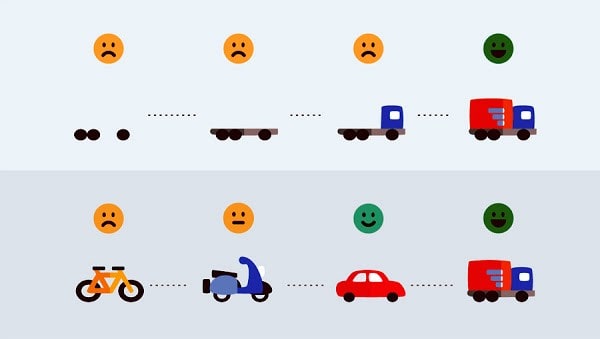
This is a popular diagram used by Spotify to explain the concept of an MVP. The bottom illustration shows five different product iterations for the transport or automotive industry. Yet, of course, they are not really five different versions of the same thing — they are five separate products, each targeting separate demographics and requiring different business validation.
After all, if you want to build a car, then learning from dedicated skateboarders is not going to help you very much.
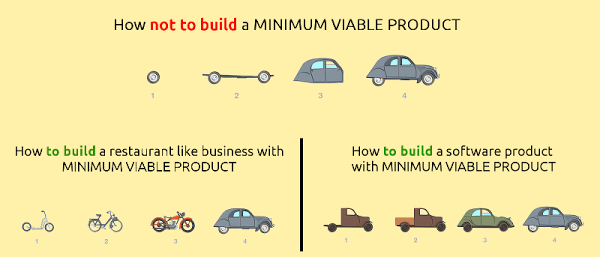
We like the above analogy better because it means you are building a minimal version of the car but with core differentiating features and validating business and product assumptions.
When polished products can easily be put together and released quickly, you shouldn’t ship half-baked products because customers judge them on the quality and user experience. In 1995 great design was a website like this, but today you are probably fighting quality perception bias with the likes of Facebook, Instagram, and Apple.
Unpolished products are even more dangerous for your business when entering a saturated market with lots of quality offerings.
Even people who understand MVP, do not plan for iterations
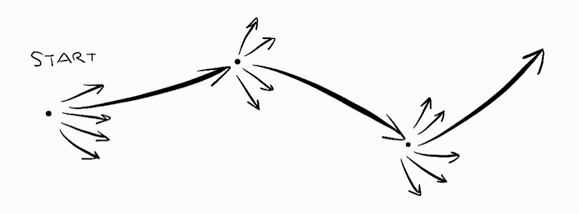
Many Lean loyalists understand and build the right MVP, but they don’t plan for iterations. After all, building something once doesn’t leave much room for learning.
You have to assume that first few iterations are going to fail and that you have to learn from audience feedback.
Build-measure-learn should be deeply integrated in your development process. Planning and budgeting around iterations will increase the chance of getting the product right.
Consequently, founders end up wasting of time and money for nothing because they either did not understand what assumptions they were testing or what customers they were targeting.
In Eric Ries’s words:
MVP, despite the name, is not about creating minimal products. If your goal is simply to scratch a clear itch or build something for a quick flip, you really don’t need the MVP. In fact, MVP is quite annoying, because it imposes extra overhead. We have to manage to learn something from our first product iteration. In a lot of cases, this requires a lot of energy invested in talking to customers or metrics and analytics.
So how to avoid MVP traps?
- When your business idea is not validated and you want to quickly test a hypothesis:
Steve Blank has famously advocated founders to go out and talk to customers in his Customer Development approach. This first simple step will make you face reality and will let you test the most basic assumptions with zero investment.
If there is interest in the product, then you can learn more about what features to build and what not to build.
You can also try out the Concierge Minimum Viable Product. It is an MVP where you manually provide the functionality of the product to the customer to test out the product ideas. You guide your user through the solution to a problem.
The Concierge MVP approach is much simpler, less wasteful, and more effective for learning what customers want.
Zappos is a classic example of a Concierge MVP. The founder of Zappos, Nick, loved shoes.He had a theory that other people probably loved shoes just as much as he did. He also had a theory that people might be open to buying shoes online.
But he wasn’t 100% sure. The first thing he did was walk into a shoe store in San Francisco. He asked the owner about the current inventory. Then he struck up a deal saying that every time someone bought a shoe on his website, he’d come over and purchase the shoe from the store owner.
The store owner agreed to the deal. Nick went home and set up a pretty simple site listing the inventory that was in the shoe store.
By pursuing a Concierge MVP, Nick validated his theory that people would buy shoes online. The value proposition was clear to early adopters: it was convenient to search through an inventory of shoes and purchase online.
Only after Nick had validated his business model through his Concierge MVP did he approach Tony Hsieh for funds.
Similarly, famed entrepreneur Bill Gross created an MVP in 1999 that validated that car buyers would be willing to buy autos online without seeing them in person. The customer would choose a car on his website, describe the options desired, and then pay for the car. Bill then would go buy the car from a dealer (losing money in the process) and deliver it to the customer.
That MVP grew into CarsDirect.com. Later on, they filed an IPO to raise $172 million.
2. When the idea is validated and want to build something to take validation further:

Let’s say you have done customer research and/or the problem you are solving comes from your personal industry experience. The next step is to build a first version to test your hypothesis.
An MVP should be the easiest way to test your hypothesis, but that doesn’t mean that building one is easy. A common mistake is refusing to tackle the tough technical problems that create revolutionary offerings. As Ries writes, some entrepreneurs hear “minimum viable” product as “smallest imaginable” product.
This misunderstanding of MVP can have expensive consequences. Sometimes, entrepreneurs miss a key opportunity to establish market differentiation by interpreting the “minimum” component of an MVP to mean “half-baked or unpolished.”
So how do you build this MVP and choose what features to include?
One best practice we’ve identified is to always ask: Are the challenging features critical to your value proposition? Would investment in these features lead to a revolutionary offering, or a valuable and differentiating capability?
Square faced these and debuted a truly revolutionary MVP. On the other hand, Dollar Shave Club tested their product idea with a landing page and video. However, they kept the inventory small to validate the amount of people who were willing to join a club on a recurring monthly payment.
The YouTube video went viral (19M views) and they got a thousand signups within a day.
Dropbox and Buffer are premier examples cited by MVP enthusiasts of creating a landing page as an MVP and becoming successful. But what isn’t talked about is how well Dropbox executed in terms of the solving technical and UX challenges from the get-go. In fact, from the start the Dropbox product has been described as “it just works” and that it was so simple to use.
You cannot achieve what Dropbox did if you just build a minimal version and hope customers will bear through it for months. You will have to build a minimum awesome product that doesn’t compromise on experience and value.
Both Minecraft and Foursquare are examples of this type of MVP. They had less features when they launched but the initial experience and value they provided was great and well thought out.
Minecraft is one of the most successful games in the history of game development. You couldn’t do much in the first version — it was basically an ugly blocky 3D-landscape where you could dig up blocks and place them elsewhere to build crude structures. But it was launched with a core experience that was sticky and thought out to test the hypothesis of their game theme.
Similarly, Foursquare launched a single-featured MVP that began with check-ins and gamification rewards. This helped them test their hypothesis.
3. When you are developing a product and there is tons of competition:

This is the most expensive approach to an MVP.
Companies innovating in existing businesses or B2B businesses find themselves in a feature war, so they must build more than the minimum. To put it another way: in order to be viable, their minimum must be enough to compete against existing players plus some sort of differentiation.
In these kinds of MVP, you build a product targeting the core problems customers are facing and make sure the solution is ten times better than any other solution in that domain.
We all have seen many prominent players who have made attempts to disrupt the market and measure the demand with minimum viable product, or we say “minimum loveable product.”
For example, you can’t deny the contribution of Sir Richard Branson. His Virgin group has done their product idea validation in every possible market around the world. Every time they come across a disruptive idea, they offer revolutionary features which simply can’t be ignored.
Virgin Air started with just one airplane flying between two locations to test their concept without compromising their value proposition. They delivered their promise and then expanded their fleet further.
So once again, our advice to founders is: please don’t be lazy in the name of MVP. An MVP is not a cheaper product, nor it is a minimal version of a product with the smallest possible feature set. Think of an MVP as a series of experiments and research activities with the sole goal of helping you learn.
When Apple was figuring out its retail experience, they prototyped it. They built a life-sized store. Was it an MVP? We’re guessing Steve Jobs and Ron Johnson (the store’s designer) were not trying to find a balance between minimum and viability.
They didn’t roll out stores across the country based upon initial design concepts and assumptions. They did build and scrap and then rebuild a full retail store experiment! The prototype convinced the board to go ahead with a four store trial run.
When Apple first released the iPhone it was lacking in many features that competitor’s phones (mainly Nokia phones) offered. But the experience and new kind of interface was not minimal or unpolished in any way.

Conclusion
You can’t achieve a successful business by simply accumulating the right features. It comes from the right elements working together so users stop thinking about the technology and simply achieve their goals.
The MVP is primarily about the search for a repeatable and scalable business model. It is a process to determine viability of the business. One caution though: even if you validate ideas at the initial stages, there is a chance that after the product is built and you gain more customers, you realize that the initial validation was based on the wrong assumptions. That’s why it has to be an ingrained process.
Have a story/thought to share, please do so in the comment section. If you have enjoyed this article, you will love- Practical UX Design Tips for Startups and Teams on budget.

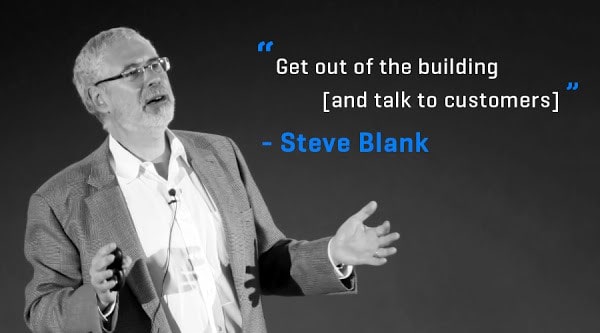
Your new valuable key element points imply much someone like me and really more to business office workers. With thanks; by every one of us.
Glad that you liked the post. 🙂